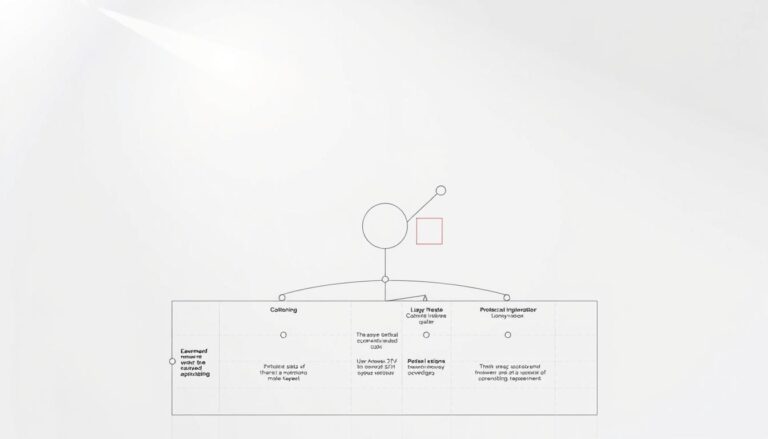A well-structured go-to-market strategy ensures products reach the right audience at the optimal time. Businesses that align their digital presence with strategic objectives often see measurable improvements in customer acquisition and retention. This alignment starts with a website that balances technical precision, user-centric design, and clear market positioning.
Modern digital platforms must evolve with shifting consumer behaviors and competitive landscapes. A high-performing site acts as more than a brochure—it’s a dynamic tool for validating product-market fit and guiding users toward conversion. Every visual element, navigation path, and call-to-action should reinforce core business goals while addressing audience pain points.
Data-driven decisions separate effective designs from merely aesthetic ones. Analyzing metrics like bounce rates, click patterns, and engagement levels helps refine layouts and content hierarchies. This approach minimizes guesswork, ensuring resources focus on features that directly impact revenue growth and brand authority.
Key Takeaways
- Websites serve as critical first impressions, requiring alignment with broader business objectives
- Adaptive design frameworks enable quick responses to market shifts without brand inconsistency
- User behavior analytics should inform layout choices and conversion optimization tactics
- Technical performance directly affects customer trust and search engine visibility
- Integrated strategies combine competitive analysis with clear value proposition delivery
Introduction to Crafting a Winning Website Launch
Launching a digital platform requires more than visual polish—it demands strategic alignment between business goals and user needs. Companies often underestimate how quickly shifting market dynamics can derail even the most innovative product introductions. Research shows 68% of organizations struggle to connect their online presence with core objectives, resulting in missed opportunities.
Effective launches blend technical precision with behavioral insights. For example, integrating user experience design with conversion analytics helps teams identify friction points before they impact sales. This approach reduces risks while creating adaptable frameworks for future scaling.
One common pitfall? Prioritizing aesthetics over functionality. While sleek interfaces attract attention, poor navigation or slow load times drive users away. A strong search engine visibility strategy becomes useless if visitors can’t find critical information within three clicks.
Successful teams treat launches as iterative processes rather than one-time events. They monitor real-time engagement metrics to refine messaging and adjust to emerging market trends. This agility separates temporary spikes in traffic from sustained growth.
Ultimately, every design choice should answer two questions: Does this strengthen our product positioning? And does it simplify the customer’s path to action? When these elements align, companies build digital assets that outperform competitors and adapt to evolving demands.
The Importance of a Go-to-Market Strategy for Successful Website Redesign
Digital platforms become strategic assets when synchronized with organizational priorities. Companies that integrate their market strategy with technical upgrades see 47% higher customer retention compared to competitors focusing solely on visual updates. This alignment transforms static pages into dynamic conversion engines.
Why Unified Approaches Outperform
Integrated redesigns deliver three measurable advantages:
| Aspect | Traditional Redesign | Strategy-Aligned Redesign |
|---|---|---|
| Focus | Aesthetic updates | Business objective fulfillment |
| Customer Engagement | +12% avg. improvement | +38% avg. improvement |
| ROI Timeline | 9-12 months | 3-6 months |
Organizations using this method report 2.3x faster decision-making cycles. They eliminate guesswork by tying every navigation element to specific market outcomes.
Case Study: From Niche to Mainstream
Oatly’s US expansion showcases strategy-driven execution. Rather than blanket advertising, they targeted specialty coffee shops frequented by health-conscious consumers. Their website mirrored this approach:
- Menu integration tools for partner cafes
- Educational content about dairy alternatives
- Localized inventory tracking features
This tactical alignment helped achieve 1000% revenue growth within 18 months. The brand became synonymous with premium plant-based options through precise digital positioning.
Identifying Market Challenges and Achieving Product-Market Fit
Successful innovation begins with solving problems people actively want fixed. Companies that decode genuine frustrations create solutions customers adopt instinctively. This alignment between market needs and product capabilities determines long-term viability.
Decoding Unspoken Needs
Traditional market research often stops at surface complaints. True customer pain point analysis digs deeper. For example, Uber didn’t just address taxi availability—it solved time-sensitive transportation reliability. This approach requires:
| Traditional Analysis | Modern Strategy |
|---|---|
| Surveys about current services | Behavioral pattern tracking |
| Competitor feature comparisons | Unmet need identification |
| Price sensitivity studies | Value perception mapping |
Blackberry’s early success demonstrates this principle. They recognized professionals needed mobile email access before most realized it was possible. Their product became essential by anticipating latent demands.
Effective strategy implementation uses three steps:
- Identify recurring friction points across customer journeys
- Validate findings through A/B testing and heatmaps
- Align website architecture with problem-solving priorities
Continuous feedback loops maintain relevance as market conditions shift. Companies that institutionalize this process adapt faster than competitors. They turn challenges into opportunities by making customer frustrations their innovation roadmap.
Defining Your Target Audience and Buyer Personas
Precision in audience identification separates market leaders from competitors. Nearly 63% of failed product launches trace their root cause to misaligned target audience assumptions. Effective strategies blend data analytics with behavioral insights to create actionable profiles.

Creating an Ideal Customer Profile (ICP)
An ICP acts as your organizational compass. It identifies companies or individuals who:
- Experience specific challenges your solution addresses
- Possess budget authority and implementation capability
- Show measurable need through search behavior or engagement patterns
B2B teams often analyze firmographics like employee count and tech stack usage. For B2C, psychographics like lifestyle preferences prove critical. Demographics alone rarely explain why customers choose one brand over another.
Developing Detailed Buyer Personas
While ICPs define customer qualifications, personas reveal decision-making drivers. A healthcare SaaS company might create distinct profiles for:
| Aspect | Ideal Customer Profile | Buyer Persona |
|---|---|---|
| Focus | Organizational fit | Individual motivations |
| Data Sources | CRM analytics | User interviews |
| Design Impact | Feature prioritization | Content personalization |
Seasoned marketing teams update personas quarterly. They track shifting priorities like sustainability concerns or remote work trends. This vigilance prevents outdated assumptions from skewing conversion strategies.
Establishing a Clear Value Proposition and Key Messaging
Clarity in communication separates brands that resonate from those that get lost in market noise. A value proposition isn’t just a tagline—it’s a strategic advantage when aligned with audience needs. Research shows tailored messaging increases conversion rates by 42% compared to generic approaches.
Mapping Messaging to Customer Segments
Effective strategies use a value matrix to connect solutions with specific frustrations. This framework organizes:
- Buyer persona characteristics
- Critical pain points per segment
- Product benefits addressing each issue
- Action-focused messaging templates
For example, a SaaS company might craft different headlines for IT managers (emphasizing security) versus CFOs (highlighting cost savings). Marketing teams achieve 68% higher engagement when content mirrors the language customers use during discovery calls.
Consistency strengthens brand recall. Every page element—from CTAs to error messages—should reinforce core promises. A/B testing reveals which phrases build trust fastest. One fintech startup increased sign-ups by 29% simply by swapping “Start Free Trial” with “See Your Savings Estimate.”
Regular audits prevent message drift. Analyze competitor positioning quarterly and update value matrices as customer priorities evolve. This proactive approach keeps communications relevant without sacrificing strategic focus.
Crafting a Detailed Plan for go to market website design
Blueprint development bridges vision with execution. Teams that map research insights to tactical milestones achieve 73% faster launch cycles than those relying on generic templates. This alignment transforms abstract concepts into actionable steps.

Integrating Market Research with Design Objectives
High-performing teams treat data as their compass. They connect behavioral analytics with creative priorities through three core practices:
- Translating competitive analysis into differentiated interface patterns
- Converting user testing results into navigation improvements
- Aligning technical specifications with conversion rate targets
Consider how enterprise software leaders approach planning:
| Traditional Planning | Strategic Approach |
|---|---|
| Fixed project timelines | Phased rollouts with feedback loops |
| Departmental silos | Cross-functional review boards |
| Subjective quality checks | Automated performance benchmarks |
Organizations using this methodology report 41% fewer post-launch revisions. They establish clear success metrics during wireframing stages rather than retroactively. Real-time dashboards track progress against objectives, enabling course corrections before resources get wasted.
Centralized platforms streamline collaboration without compromising creative vision. Version control systems maintain design consistency across global teams, while integrated calendars synchronize developer sprints with marketing campaigns. This operational harmony turns complex strategies into measurable outcomes.
Enhancing User Experience Through Responsive and Mobile Design
Over 60% of web traffic now comes from mobile devices, making cross-platform compatibility non-negotiable. Modern audiences expect seamless interactions whether they’re using a smartphone during their commute or a desktop at work. This demands more than basic adaptability—it requires strategic alignment between technical capabilities and human behavior patterns.
Ensuring Intuitive Navigation
Clear pathways transform casual visitors into engaged users. Effective layouts anticipate needs through:
- Visual hierarchy that guides attention to priority actions
- Predictable menu structures matching common mental models
- Contextual search functions that surface relevant content
E-commerce leaders like Amazon demonstrate this principle through persistent cart visibility and personalized recommendations. Their approach reduces decision fatigue while increasing average order values.
Optimizing for Mobile Devices
True mobile readiness goes beyond screen adjustment. It addresses thumb-friendly tap targets, compressed media loading under 3 seconds, and vertical scrolling patterns. Key considerations include:
| Desktop Standard | Mobile Optimization |
|---|---|
| Hover effects | Explicit touch indicators |
| Multi-column layouts | Single-column flows |
| Dense text blocks | Bite-sized content chunks |
Companies implementing these adjustments see 54% higher completion rates for mobile forms. Regular device testing ensures features work flawlessly across operating systems and screen sizes.
Integrating SEO and Content Strategy for Better Visibility
Visibility in digital spaces demands more than technical tweaks—it requires a symbiotic relationship between search algorithms and human needs. Brands that merge SEO strategy with content quality create sustainable pathways for discovery and trust-building. This alignment turns casual visitors into loyal advocates.
Keyword Distribution and On-Page SEO Tactics
Effective optimization starts with understanding search intent. Tools like semantic analysis reveal how audiences phrase questions, allowing teams to craft content that answers real needs. Prioritize keywords balancing search volume with relevance to your core offerings.
Technical precision ensures crawlability. Schema markup, alt text optimization, and mobile-first indexing form the backbone of modern marketing success. Pair these with targeted traffic growth tactics to amplify reach without compromising user experience.
Content Strategy for User Engagement
Compelling information delivery requires rhythm. Develop editorial calendars that mix evergreen guides with timely insights, maintaining freshness while establishing authority. Analytics reveal which formats—video, case studies, or interactive tools—drive the deepest engagement.
Measure success through behavior metrics, not just rankings. Time-on-page rates and social shares indicate whether content resonates. Refine approaches quarterly, using A/B tests to balance creativity with data-driven decisions.
FAQ
How does market strategy influence website redesign success?
A strong market strategy aligns design choices with business objectives and customer needs. It ensures the website communicates value propositions effectively while addressing specific pain points. Companies like HubSpot increased conversions by 27% through strategy-driven redesigns focused on user intent.
What tools help identify customer pain points during development?
Heatmap tools like Hotjar combined with survey platforms (Typeform) and CRM analytics reveal behavioral patterns. Social listening tools such as Brandwatch track unfiltered customer feedback across channels, providing actionable insights for UX improvements.
Why are buyer personas critical for conversion optimization?
Detailed personas (job roles, challenges, decision criteria) enable targeted messaging. Salesforce increased lead quality by 32% using persona-specific content paths. This approach reduces bounce rates by matching content to visitors’ stage in the buyer journey.
How does responsive design impact customer retention?
57% of users abandon sites with poor mobile experiences (Google Data). Responsive layouts with fast load times (
What SEO tactics align with modern content strategies?
Semantic keyword clustering (grouping related terms) enhances topical authority. Tools like Clearscope optimize content depth while maintaining readability. Backlink analysis through Ahrefs identifies high-authority partnership opportunities for earned media.
Can social proof replace traditional trust-building methods?
While user reviews and case studies drive 63% of purchase decisions (BrightLocal), they complement rather than replace security badges and clear privacy policies. Multi-touch trust elements increase credibility across all customer segments.
What metrics indicate successful brand identity integration?
Track visual consistency scores (font/color usage), branded search volume growth, and social sentiment analysis. Adobe’s rebranding campaign achieved 41% higher recognition through unified visual storytelling across platforms.
How do loyalty programs affect customer lifetime value?
Structured rewards systems increase repeat purchase rates by 49% (Bond Brand Loyalty). Tiered programs with experiential benefits (exclusive content, early access) outperform discount-only models in long-term retention.



